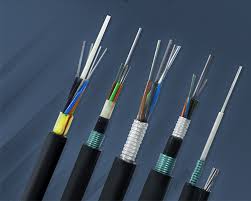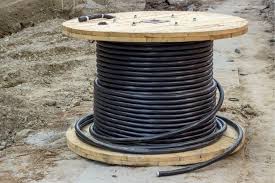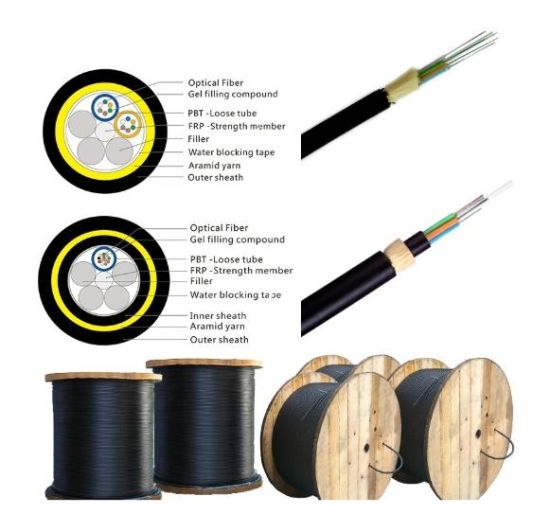GL Fiber Optic Cable manufacturers will introduce three common laying methods for outdoor optical cables, namely: pipeline laying, direct burial laying and overhead laying. The following will explain the laying methods and requirements of these three laying methods in detail.
1. Pipe/Duct laying
Pipe laying is a widely used method in optical cable laying projects, and its laying must meet the following requirements:
1. Before laying the optical cable, a sub-hole should be placed in the tube hole. The optical cable should always be placed in a sub-tube of the same color. The unused sub-tube mouth should be protected by a plug.
2. Considering that the laying process is all manual operation, in order to reduce the loss of optical cable joints, the pipeline optical cable manufacturer should use the whole plate laying.
3. During the laying process, the traction force during laying should be minimized. The entire optical cable is laid from the middle to both sides, and personnel are arranged in each manhole to assist in the middle traction.
4. The hole position of the optical cable should meet the requirements of the design drawings, and the pipe hole must be cleaned before laying the pipeline optical cable. The sub-hole orifice tube should expose the remaining length of about 15cm of the tube hole in the hand hole.
5. The interface between the hand hole inner pipe and the plastic textile mesh pipe is wrapped with PVC tape to avoid infiltration of sediment.
6. When the optical cable is installed in the human (hand) hole, if there is a supporting plate in the hand hole, the optical cable is fixed on the supporting plate. If there is no supporting plate in the hand hole, the optical cable should be fixed on the expansion bolt. The hook mouth is required to be downward.
7. The optical cable should not be bent within 15cm of the outlet hole.
8. Plastic signs are used in each hand hole and on the optical cable and ODF rack in the computer room to show the difference.
9. Optical cable ducts and power ducts must be separated by at least 8cm thick concrete or 30cm thick compacted soil layer.
2. Direct burial laying
If there are no conditions for overhead use under the laying conditions and the laying distance is long, direct burial laying is generally used, and the direct burial laying should meet the following requirements:
1. Avoid areas with strong acid and alkali corrosion or severe chemical corrosion; when there is no corresponding protective measures, avoid termite damage areas and areas affected by heat sources or areas that are easily damaged by external forces.
2. The optical cable should be laid in the trench, and the surrounding area of the optical cable should be covered with a soft soil or sand layer with a thickness of not less than 100mm.
3. Along the entire length of the optical cable, a protective plate with a width of not less than 50mm on both sides of the optical cable should be covered, and the protective plate should be made of concrete.
4. The laying position is in places with frequent excavation such as urban access roads, which can be laid with eye-catching sign belts on the protection board.
5. At the laying position in the suburbs or in the open belt, at the straight line interval of about 100mm along the optical cable path, at the turning point or the joint part, obvious orientation signs or stakes should be erected.
6. When laying in non-frozen soil areas, the optical cable sheath to the foundation of the underground structure shall not be less than 0.3m, and the depth of the optical cable sheath to the ground shall not be less than 0.7m; when it is located on the roadway or cultivated ground, it should be properly deepened, and should not be less than 1m.
7. When laying in the frozen soil area, it should be buried below the frozen soil layer. When it cannot be buried deeply, it can be buried in the dry frozen soil layer or backfill soil with good soil drainage, and other measures to prevent damage to the optical cable can also be taken. .
8. When the directly buried optical cable line intersects with the railway, highway or street, the protection pipe should be worn, and the protection scope should exceed the roadbed, both sides of the street pavement and the side of the drainage ditch by more than 0.5m.
9. When the directly buried optical cable is introduced into the structure, a protection pipe shall be provided at the through-slope hole, and the pipe opening shall be blocked by water blocking.
10. The clear distance between the joint of the directly buried optical cable and the adjacent optical cable shall not be less than 0.25m; the joint positions of the parallel optical cables should be staggered from each other, and the clear distance shall not be less than 0.5m; the joint position at the slope terrain should be horizontal; for important circuits It is advisable to leave a spare way to lay the optical cable in the local section starting from about 1000mm on both sides of the optical cable joint.
3. Overhead laying
Overhead laying can exist between buildings and buildings, between buildings and utility poles, and between utility poles and utility poles. The actual operation depends on the situation at the time. When there are utility poles between buildings, wire ropes can be erected between the buildings and the utility poles, and the optical cables are tied to the wire ropes; if there are no utility poles between the buildings, but the distance between the two buildings is about 50m, Optical cables can also be erected directly between buildings through steel cables. The laying requirements are as follows:
1. When laying optical cables in a flat environment in an overhead way, use hooks to hang them; when laying optical cables in mountains or steep slopes, use binding methods to lay optical cables. The optical cable connector should be located at a straight pole position that is easy to maintain, and the reserved optical cable should be fixed on the pole with a reserved bracket.
2. The optical cable of the overhead pole road is required to make a U-shaped telescopic bend every 3 to 5 blocks, and about 15m is reserved for every 1km.
3. The overhead (wall) optical cable is protected by galvanized steel pipe, and the nozzle should be blocked with fireproof mud.
4. Overhead optical cables should be hung with optical cable warning signs every 4 blocks around and in special sections such as crossing roads, crossing rivers, and crossing bridges.
5. A trident protection tube should be added to the intersection of the empty suspension line and the power line, and the elongation of each end should not be less than 1m.
6. The pole cable close to the road should be wrapped with a light-emitting rod, with a length of 2m.
7. In order to prevent the induced current of the suspension wire from hurting people, each pole cable must be electrically connected to the suspension wire, and each pulling wire position should be installed with a wire-pulled ground wire.
8. The overhead optical cable is usually 3m away from the ground. When entering the building, it should pass through the U-shaped steel protective sleeve on the outer wall of the building, and then extend downward or upward. The aperture of the optical cable entrance is generally 5cm.




